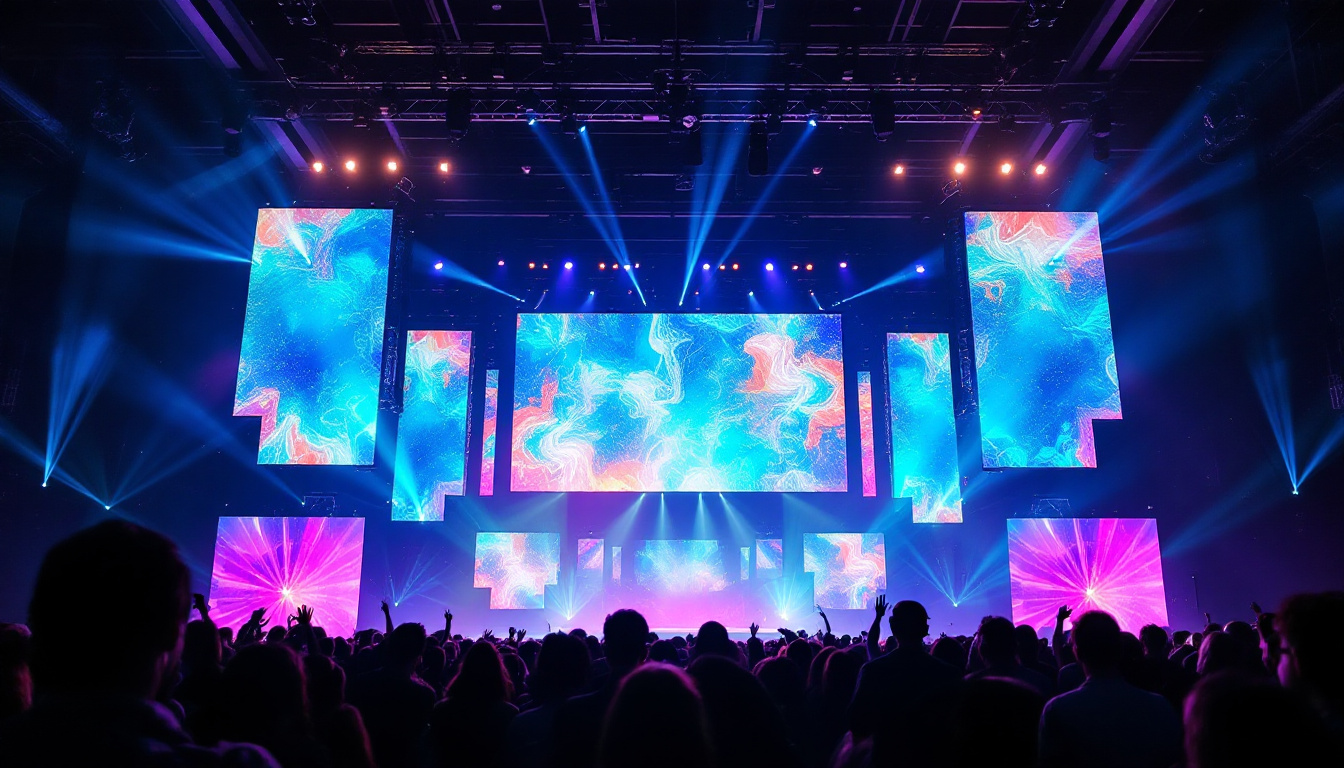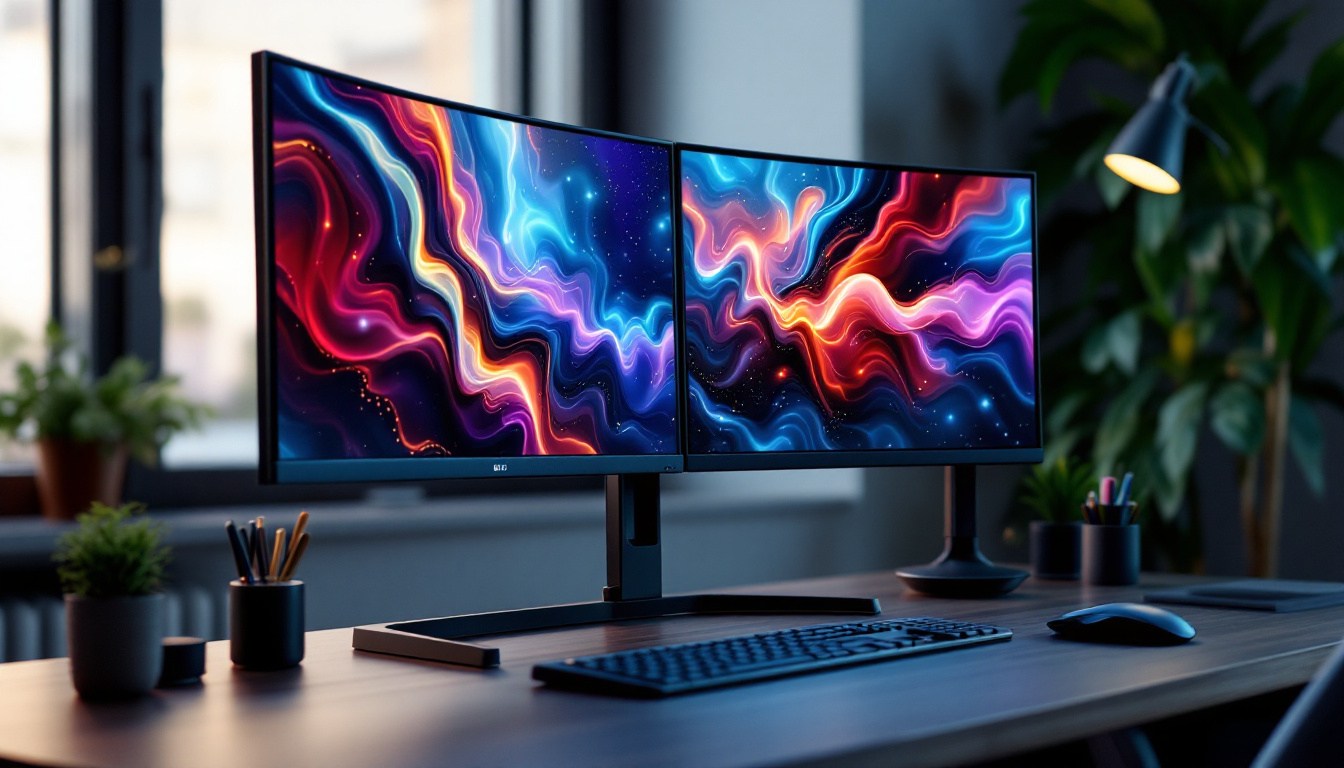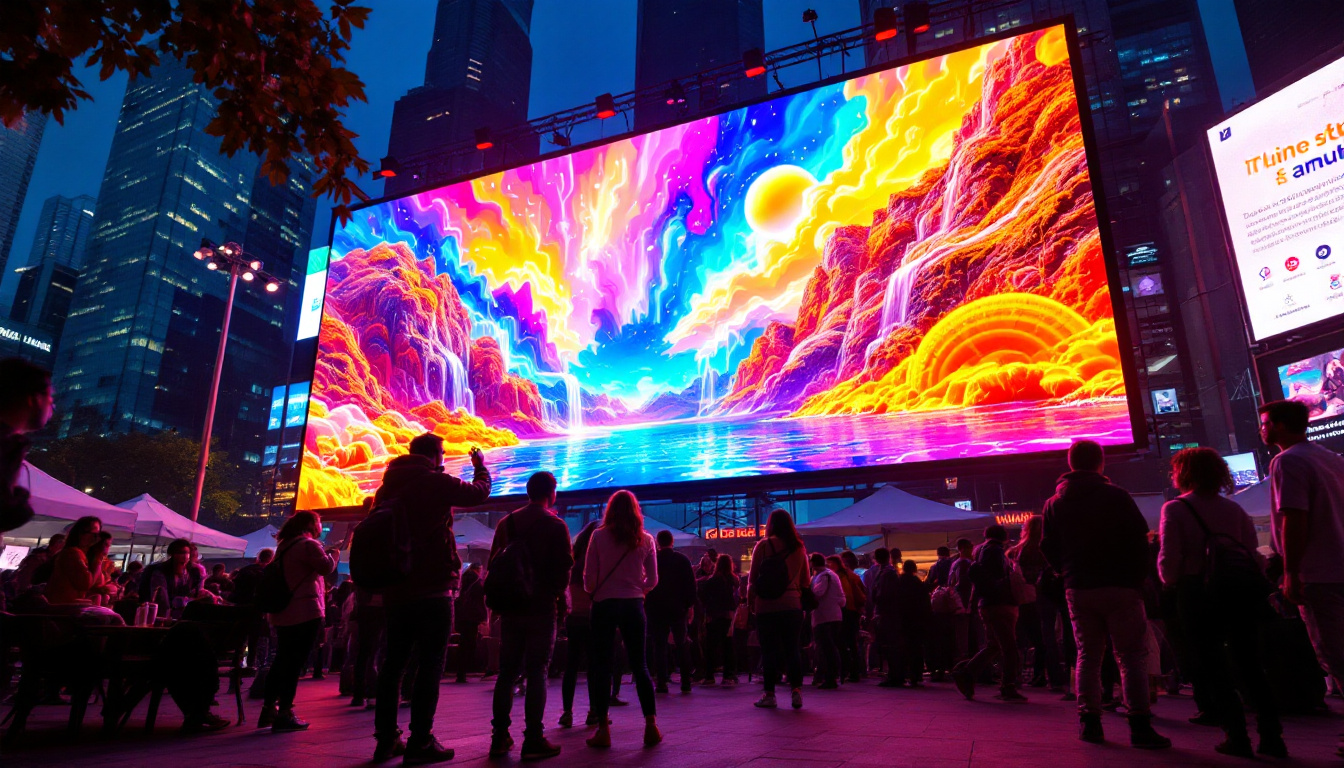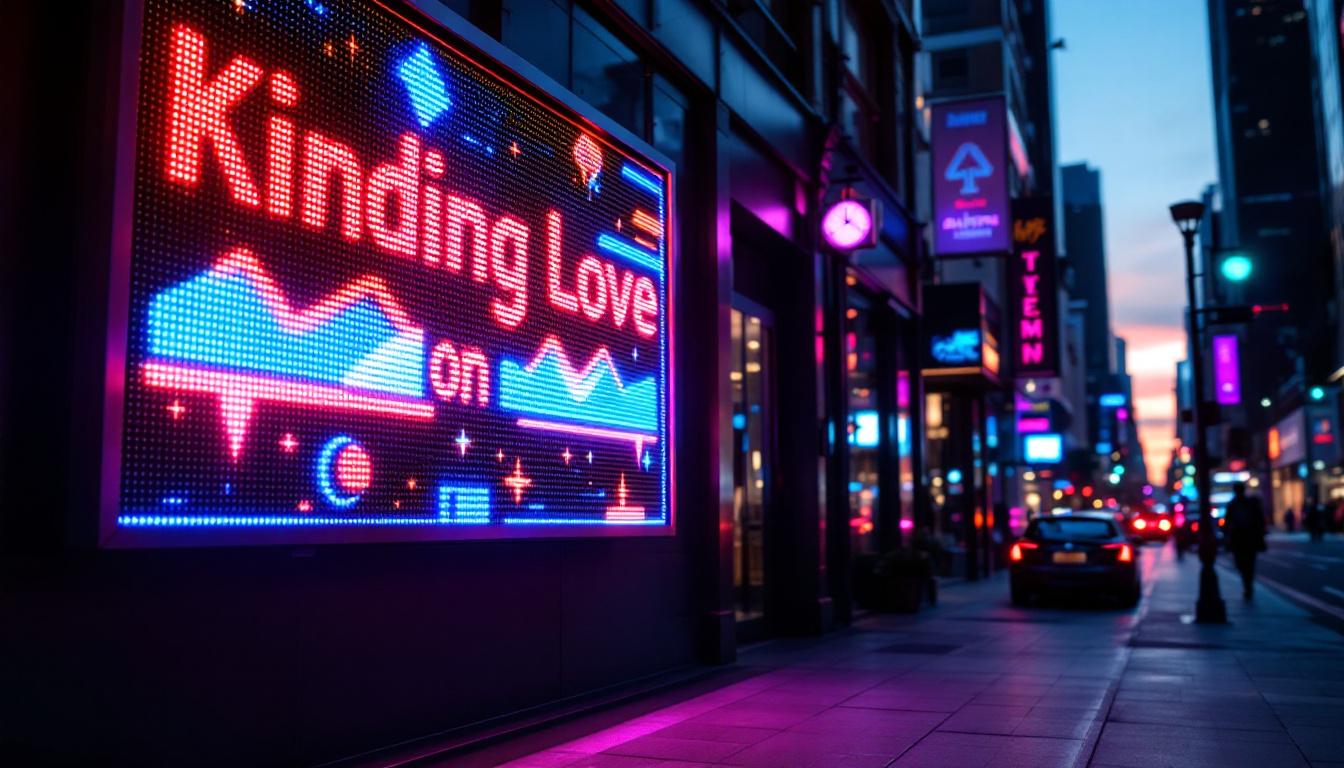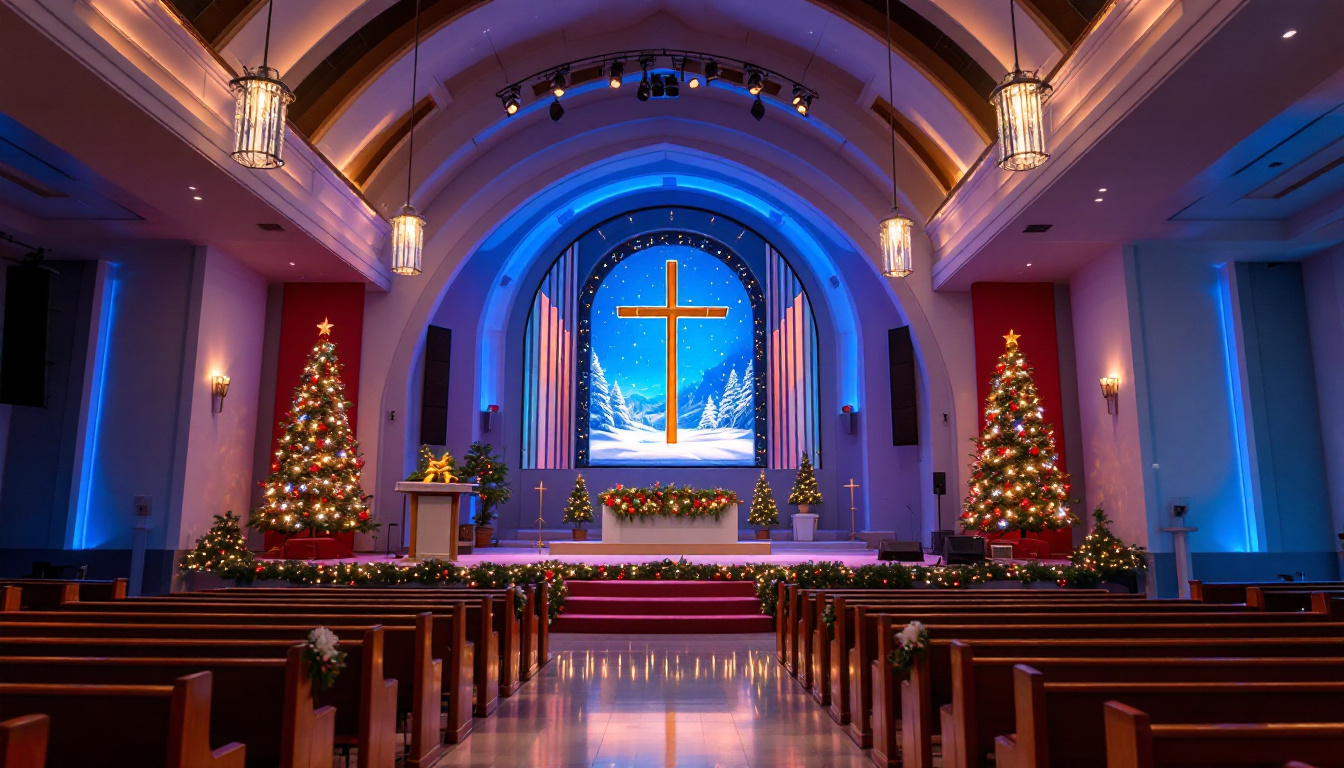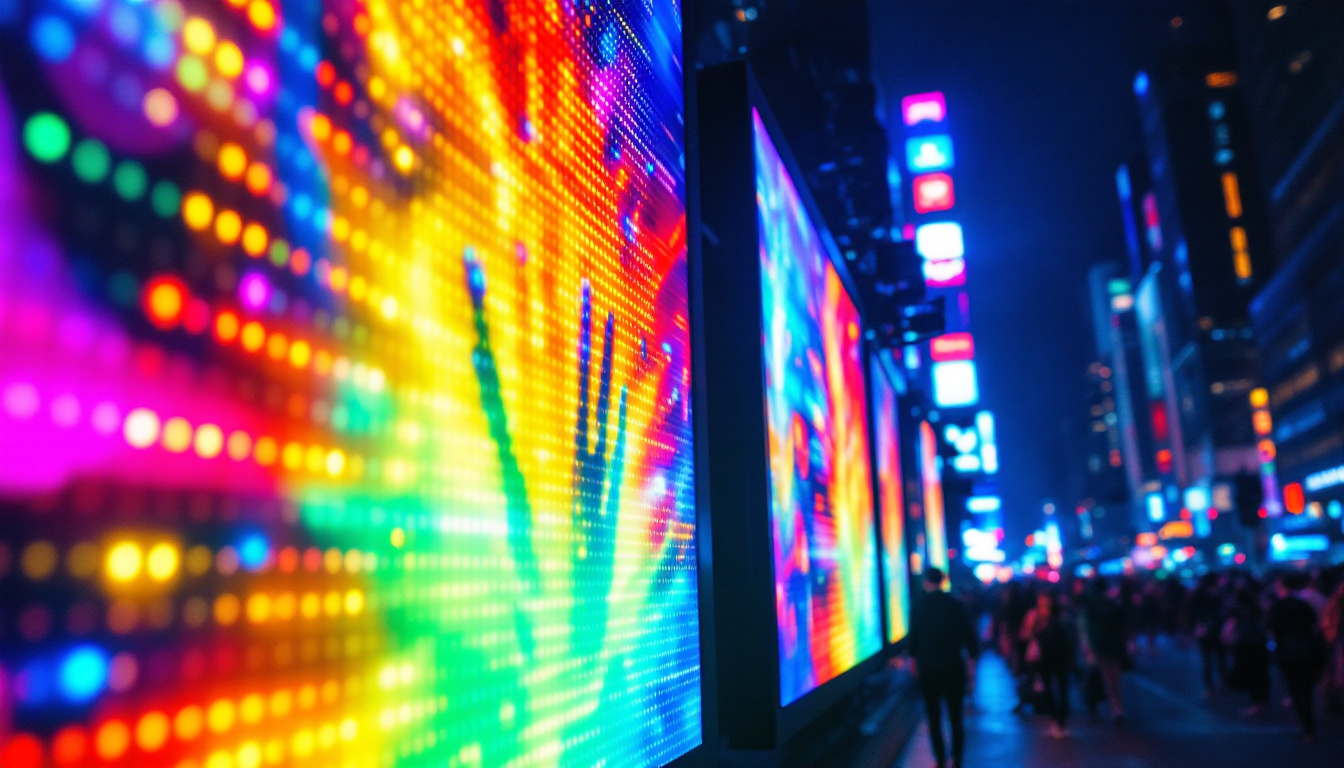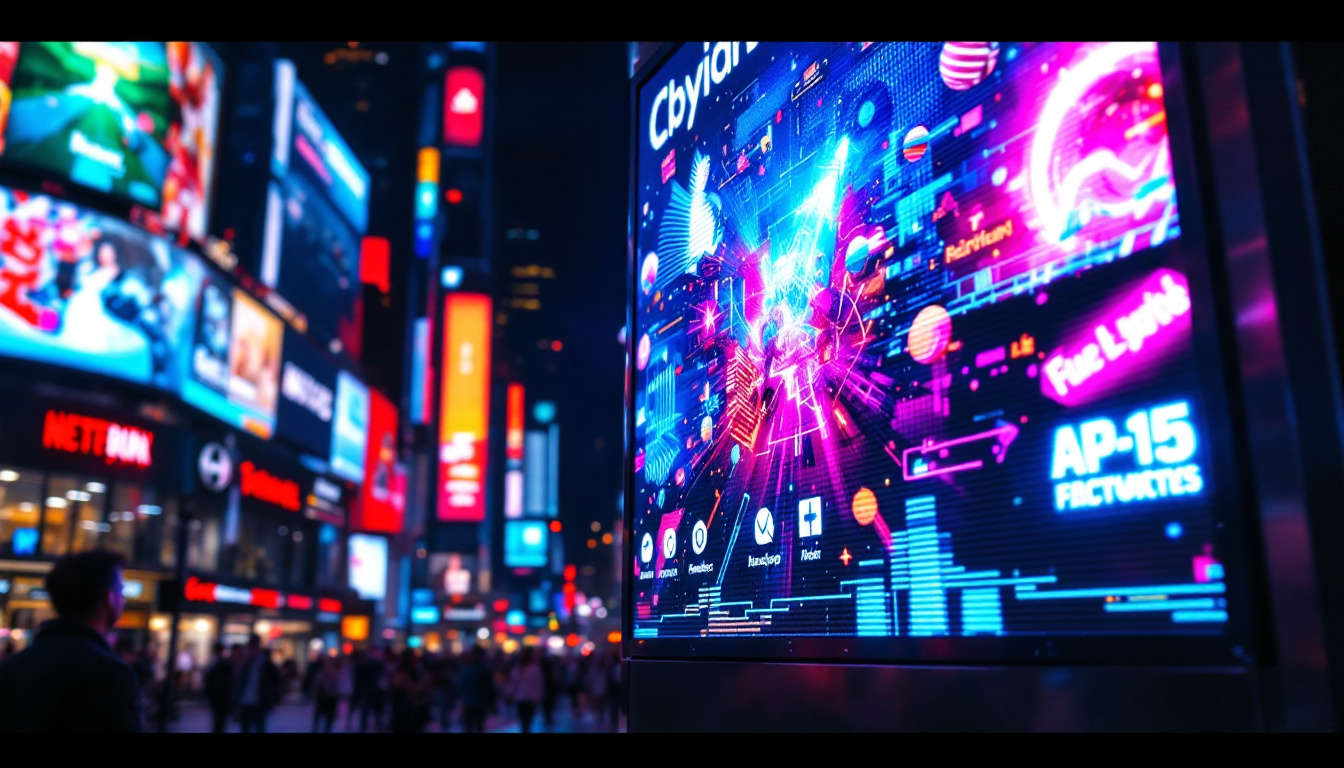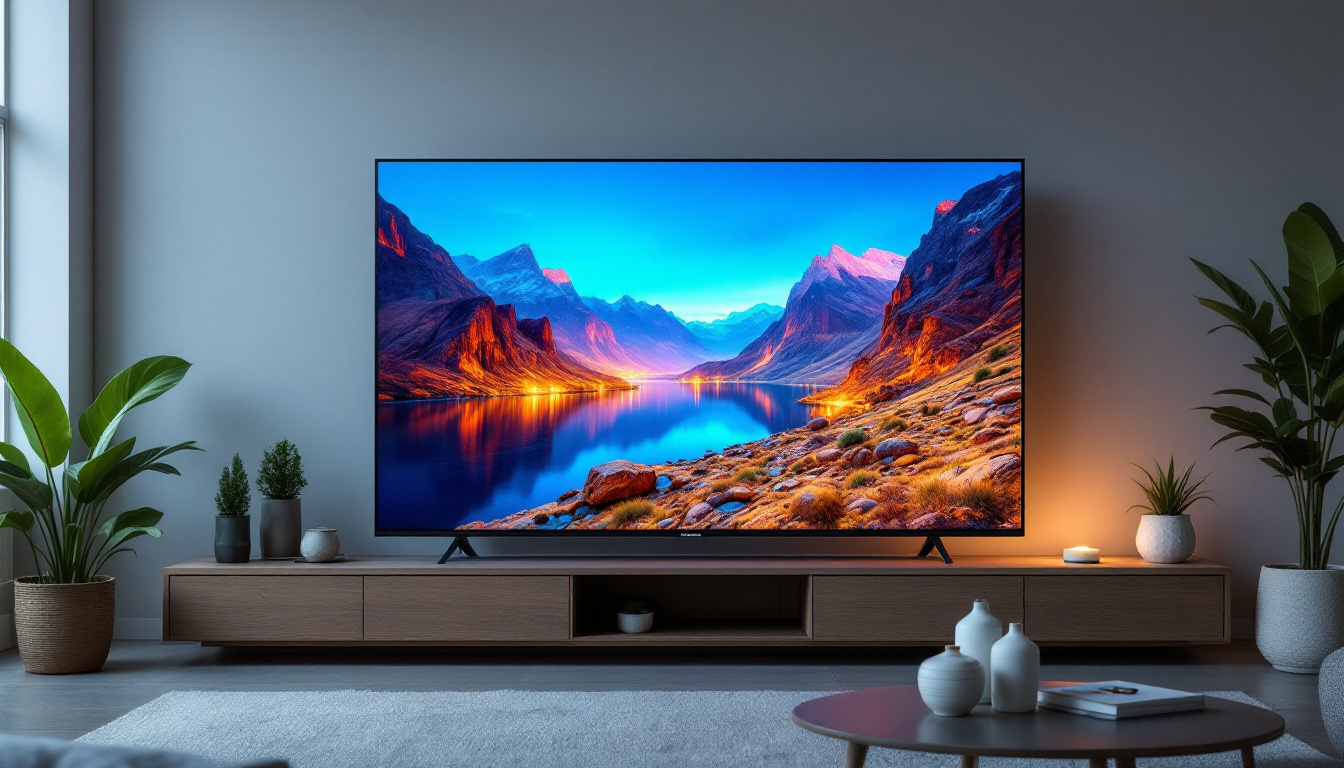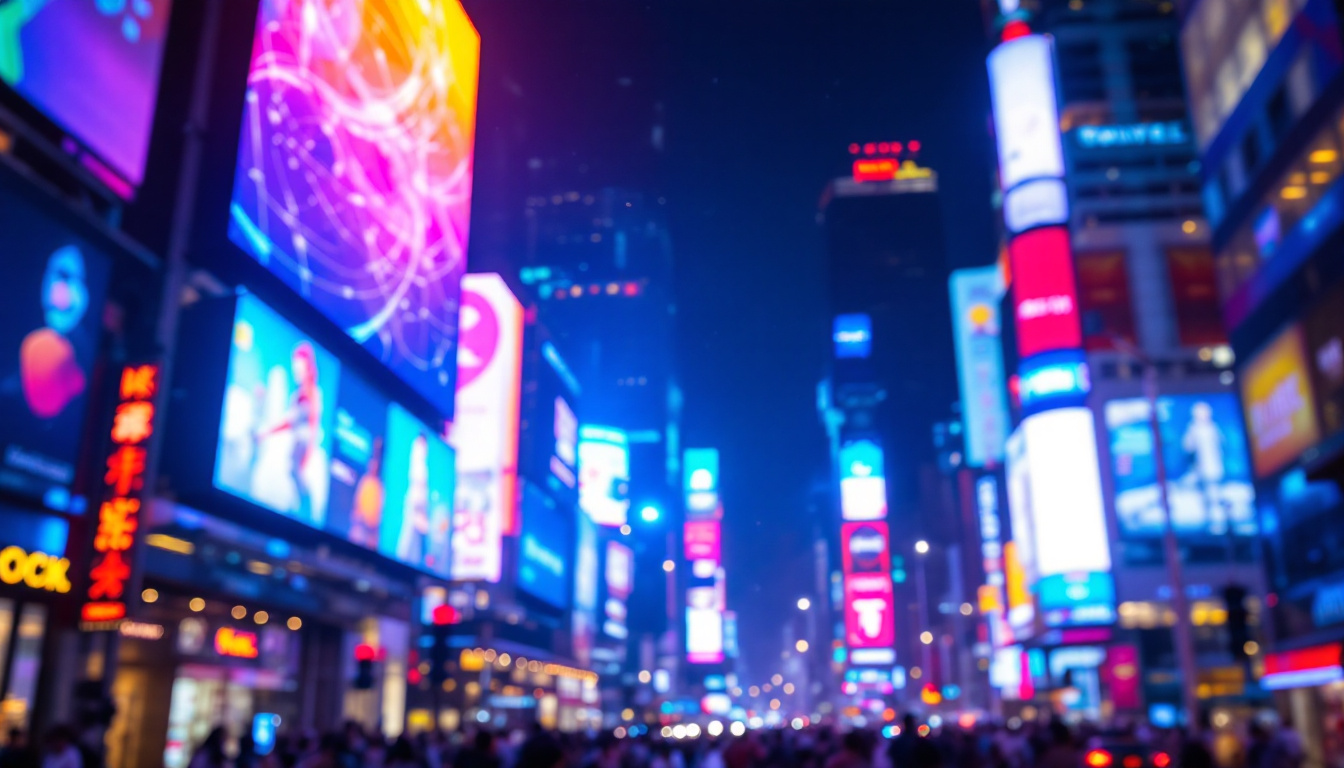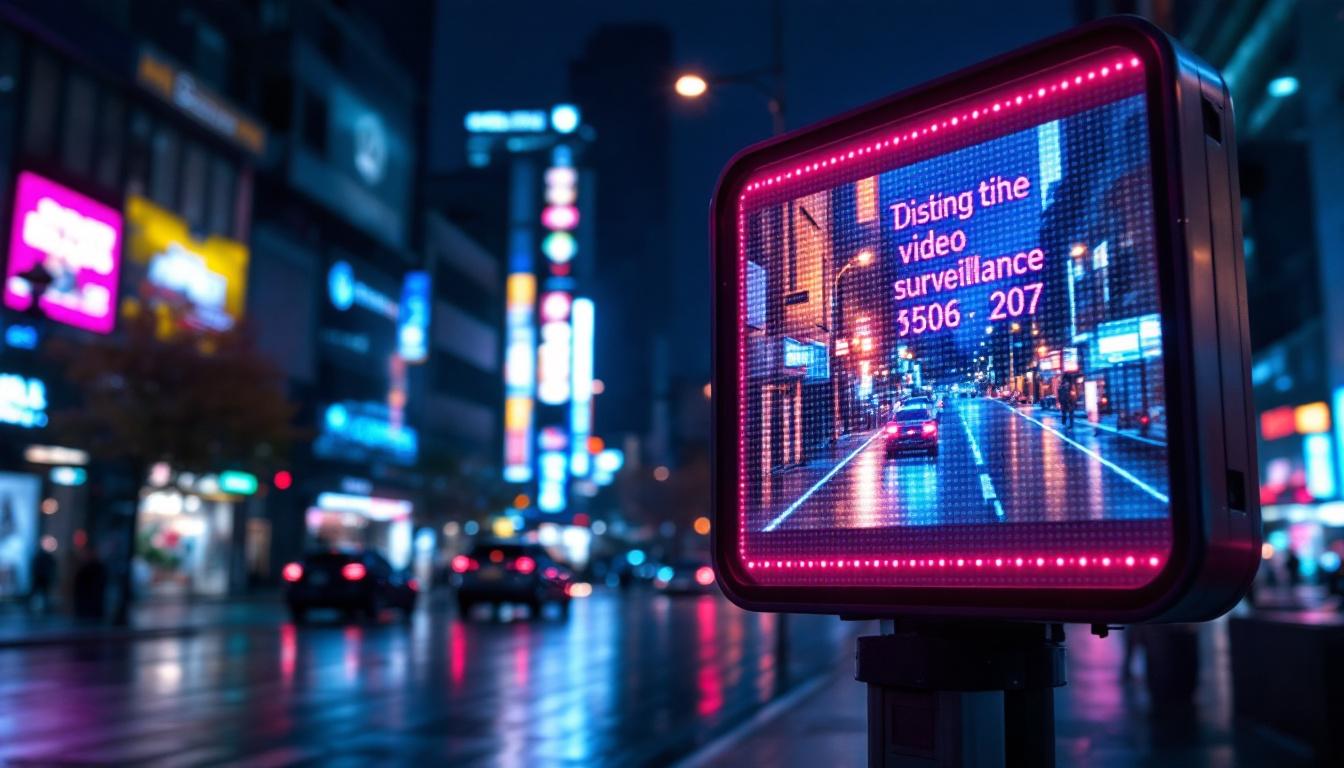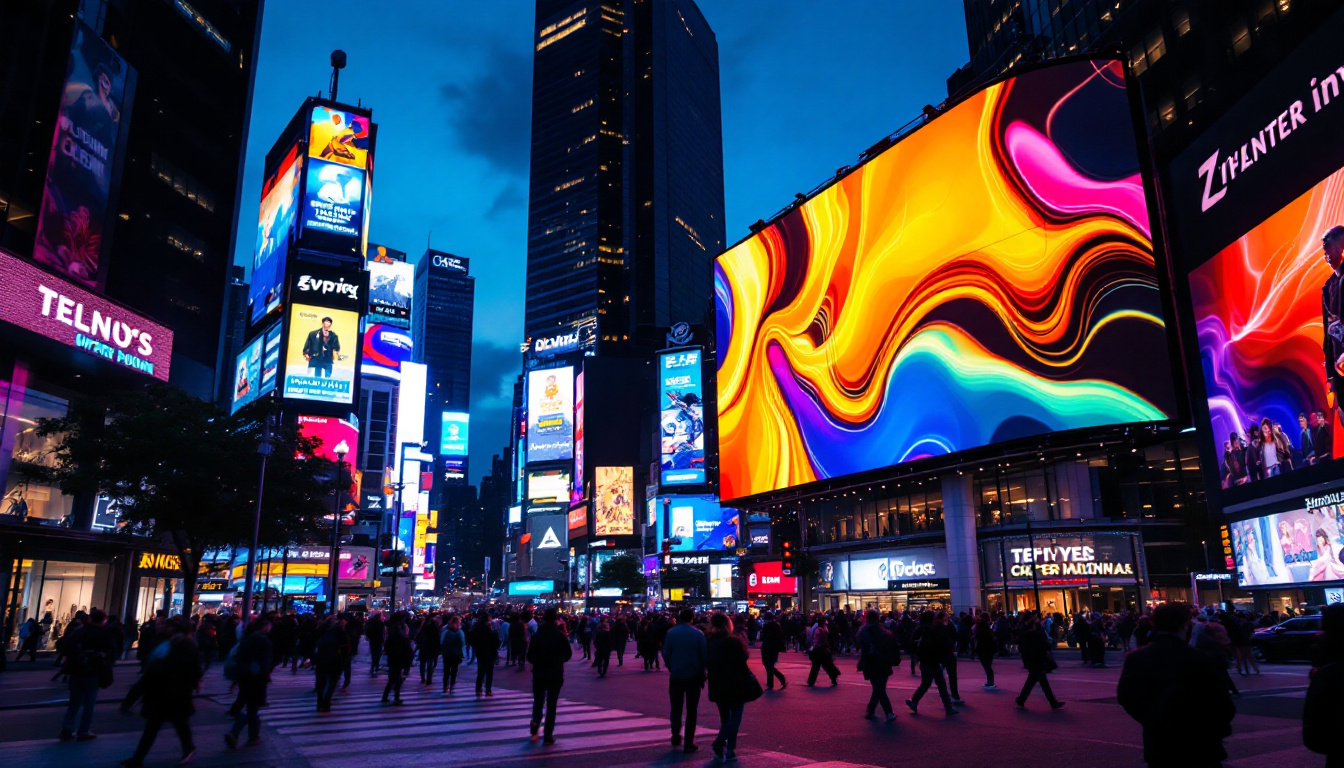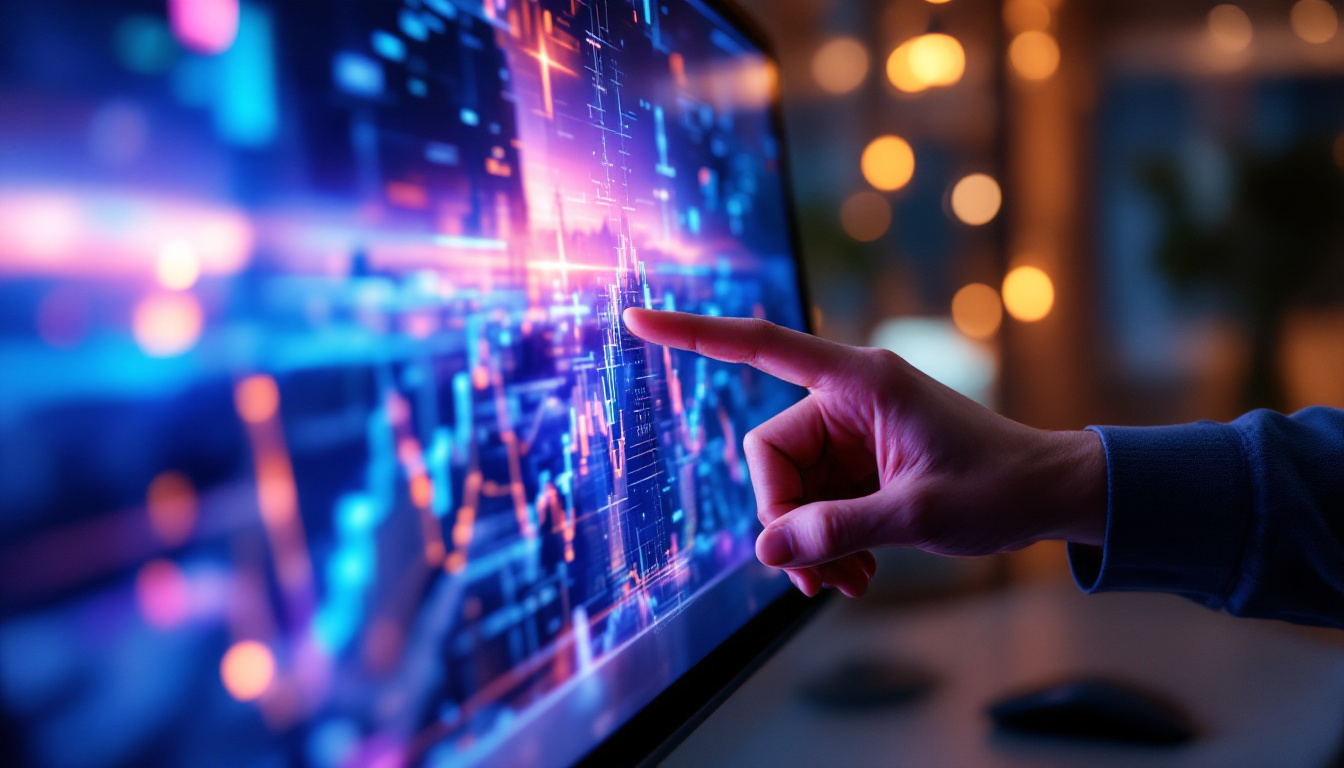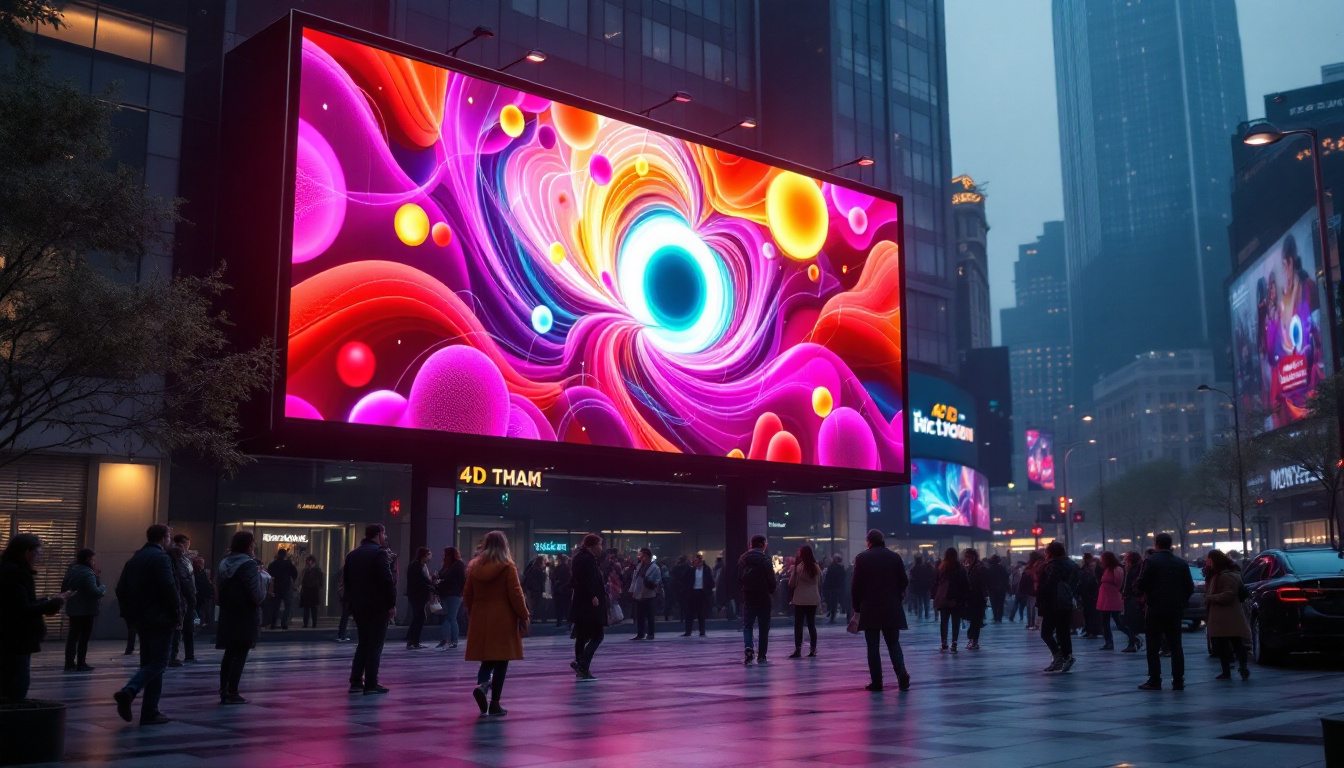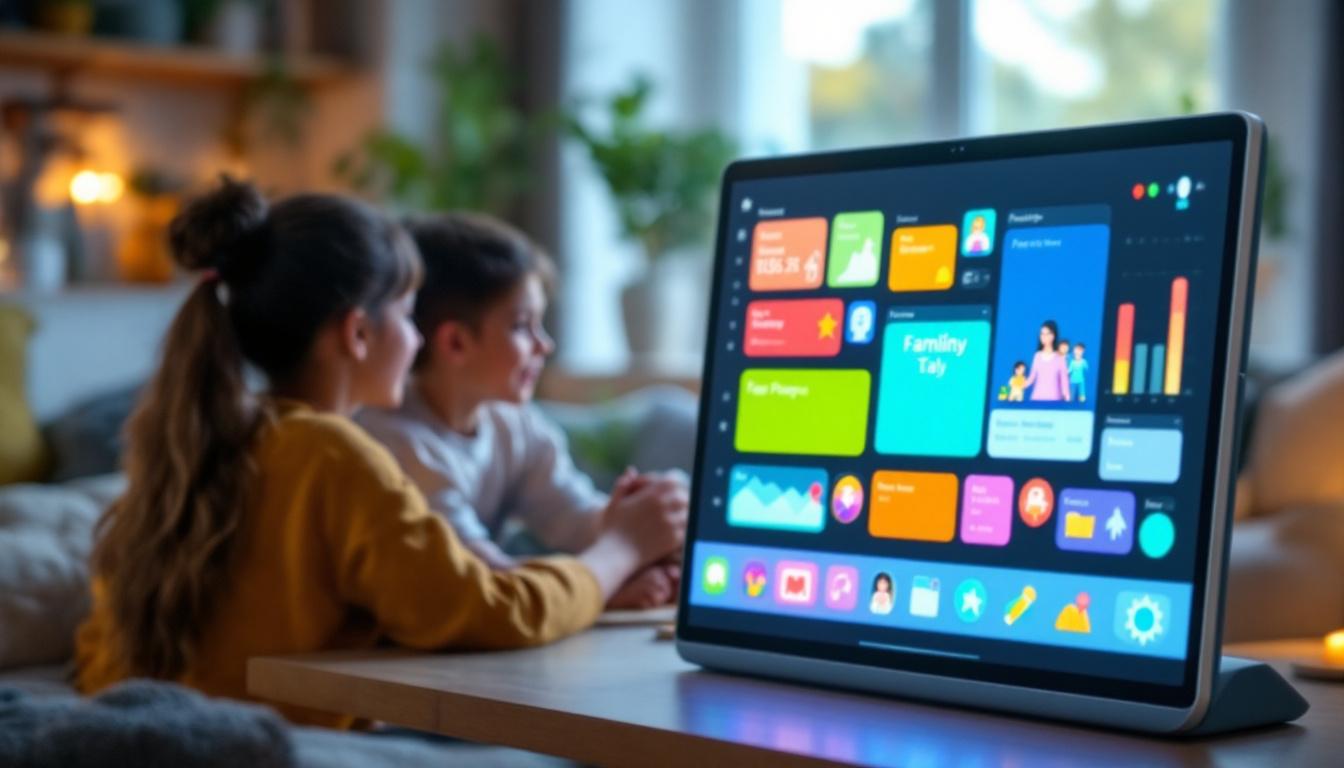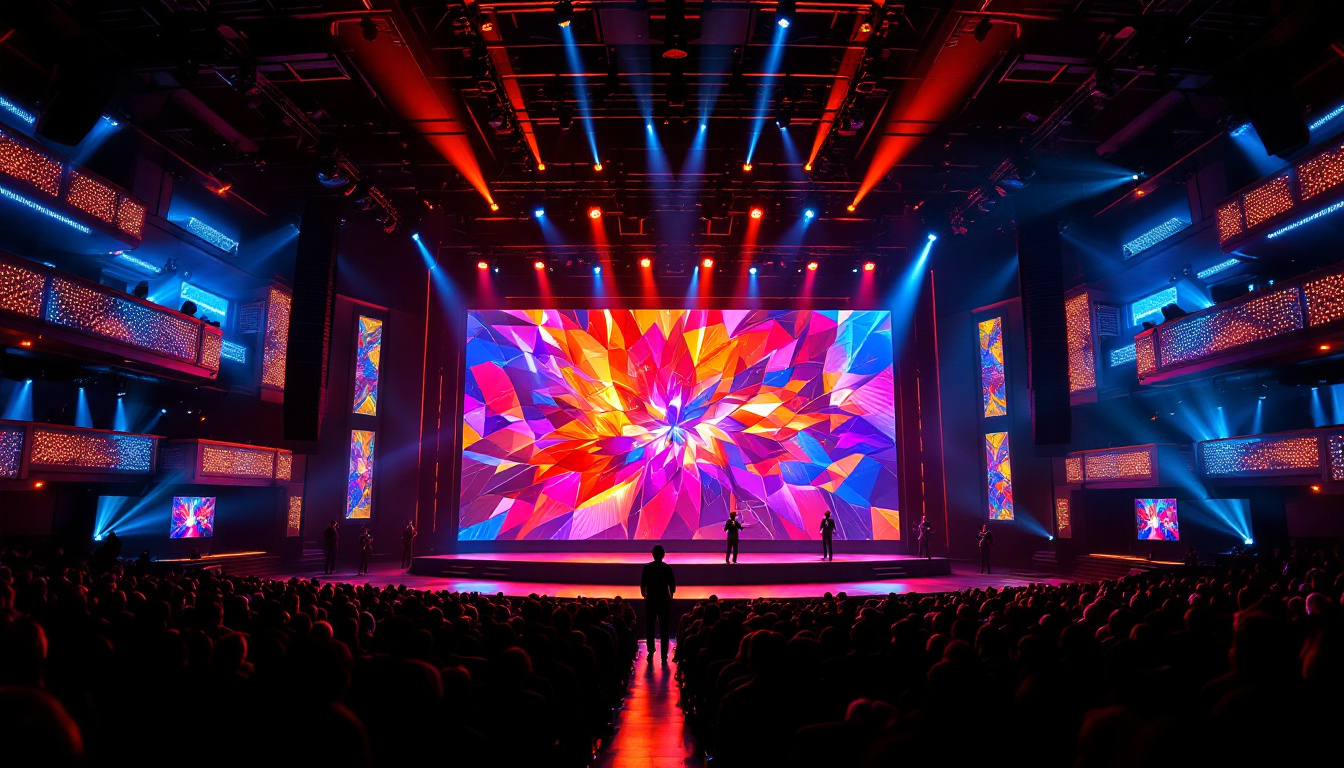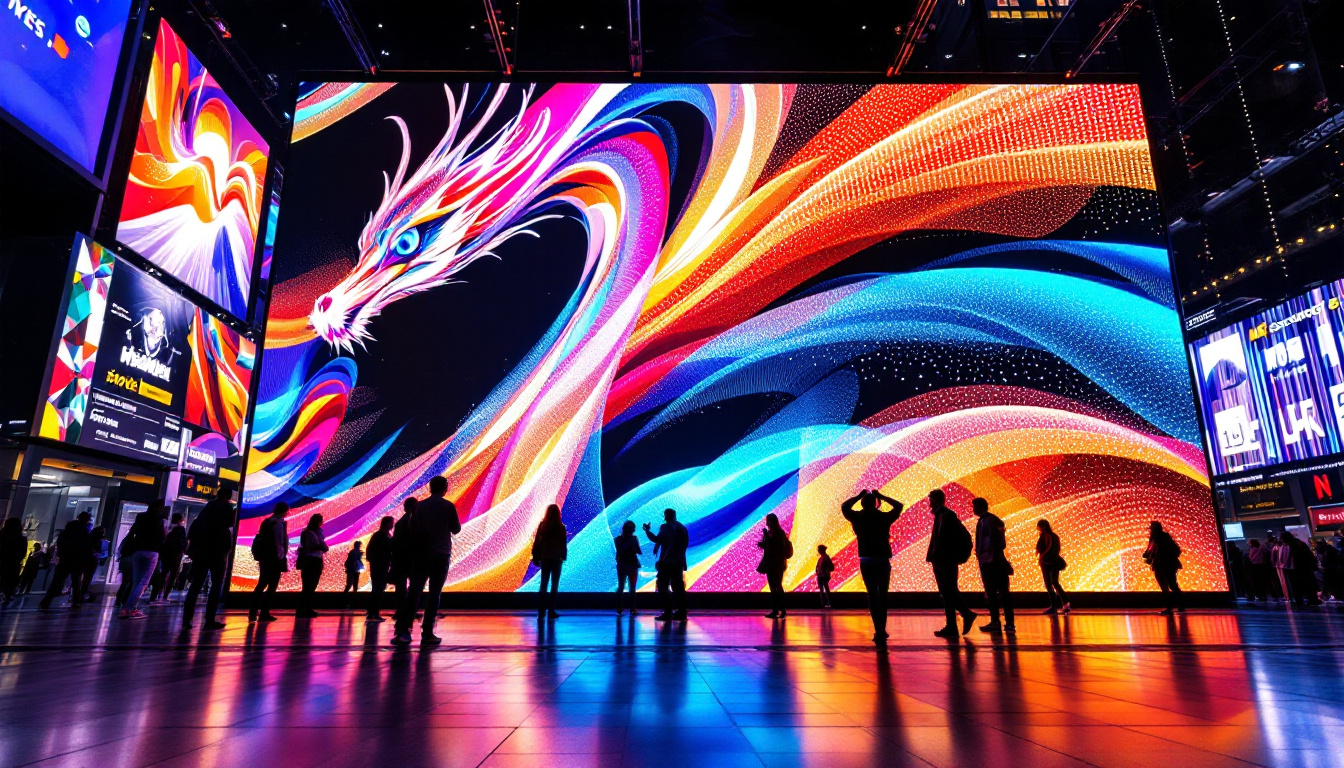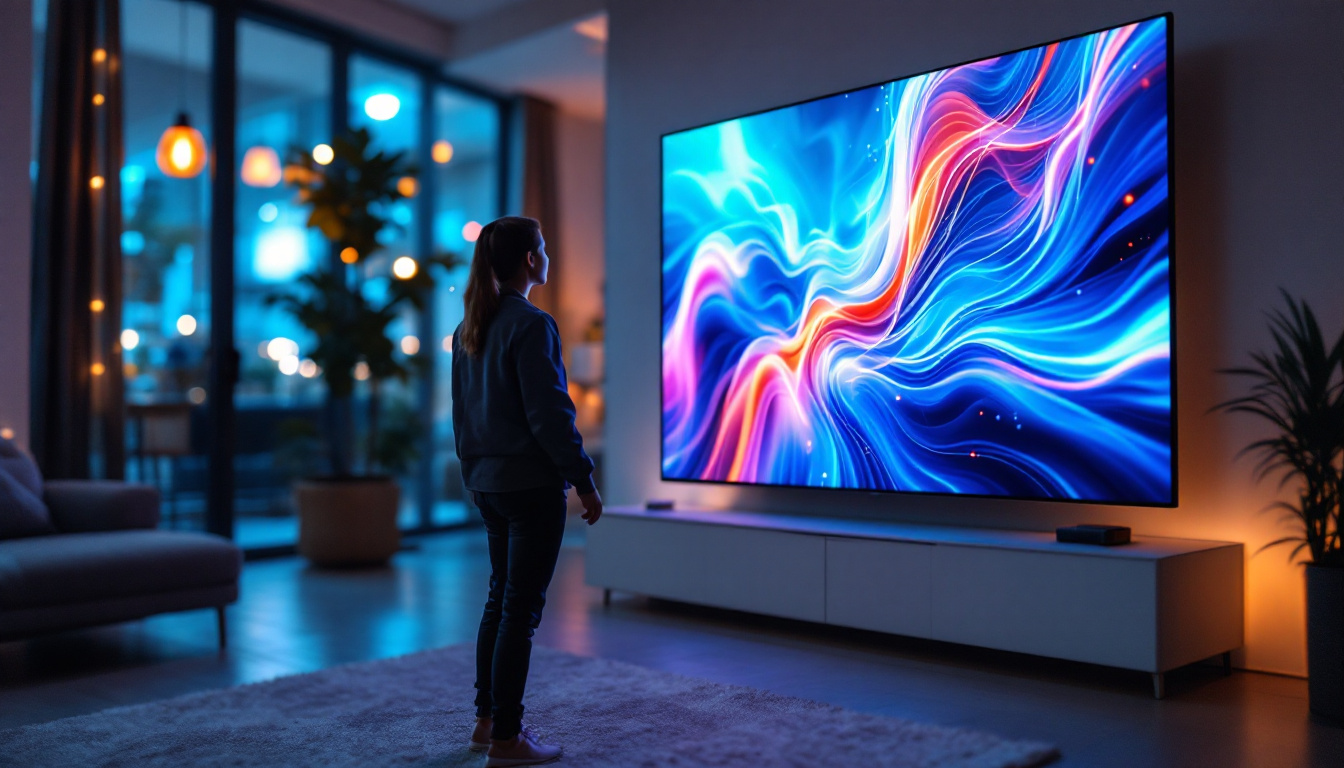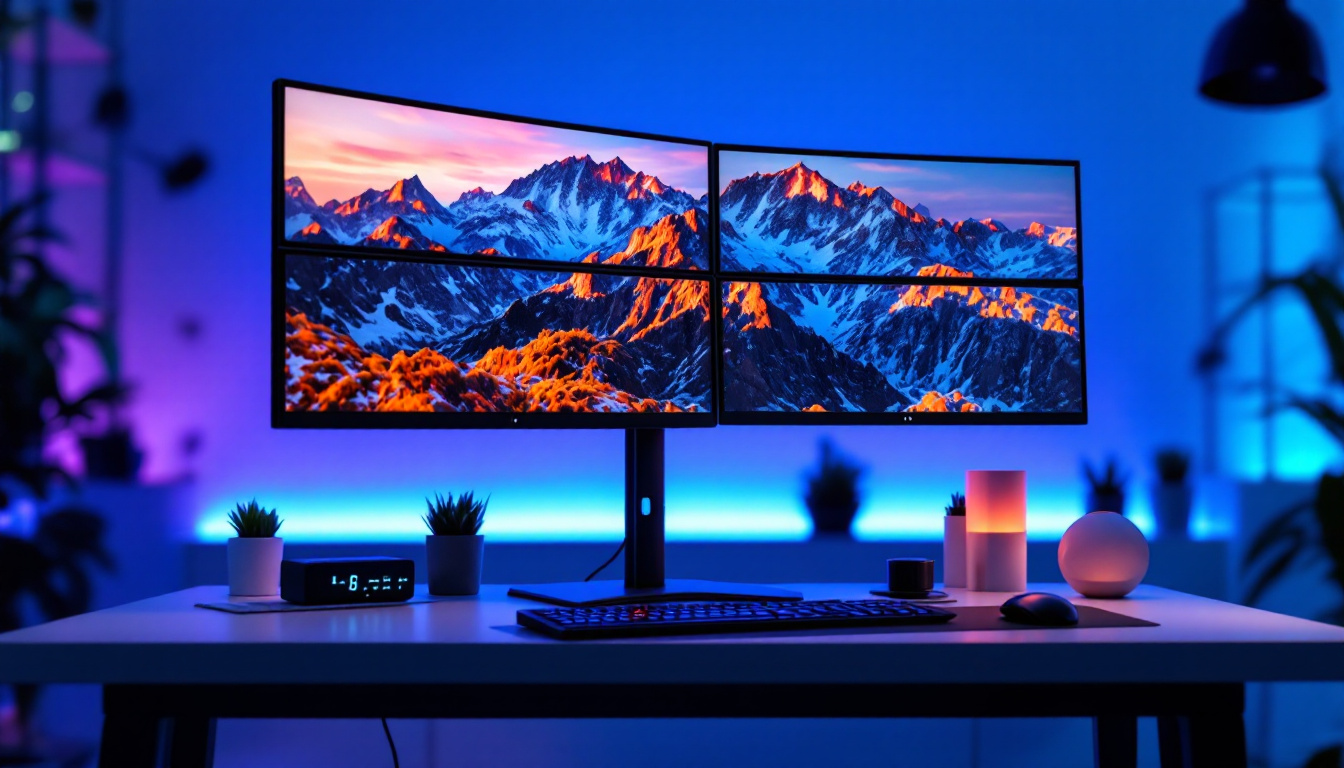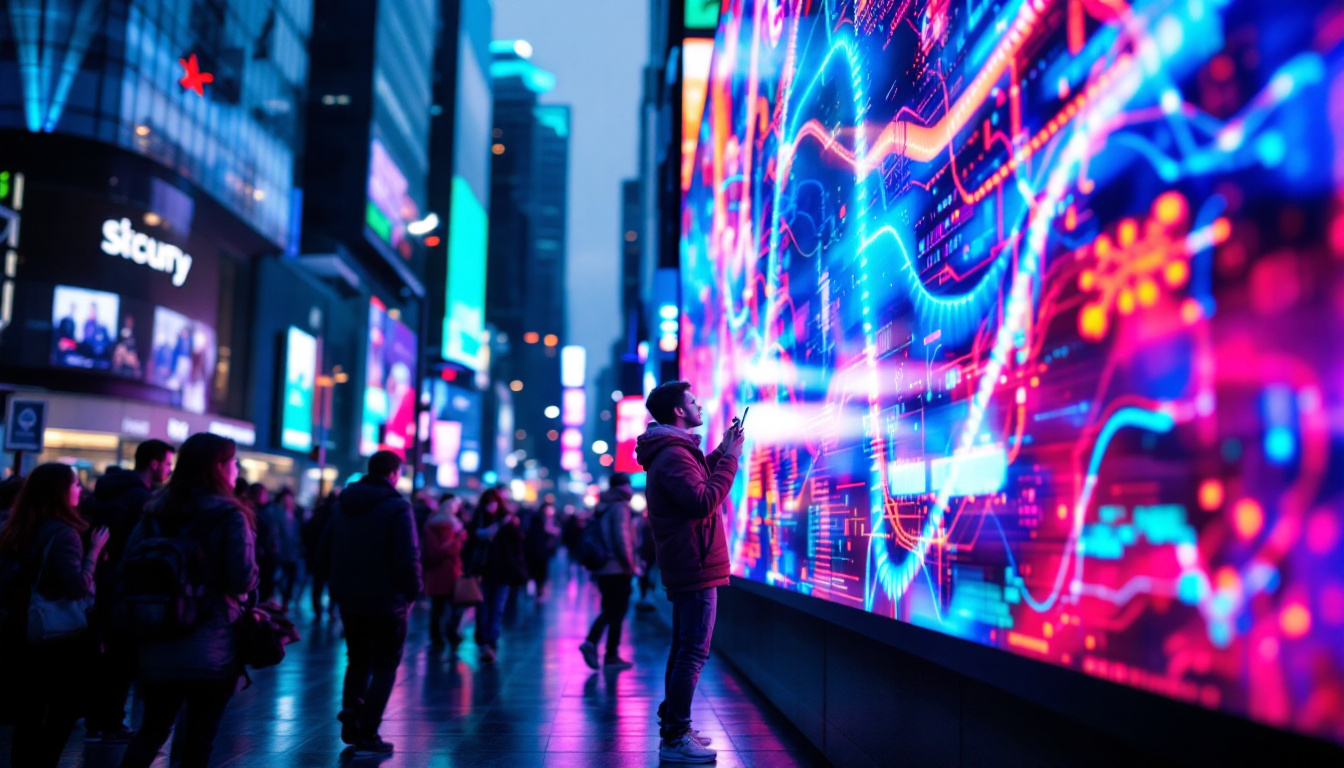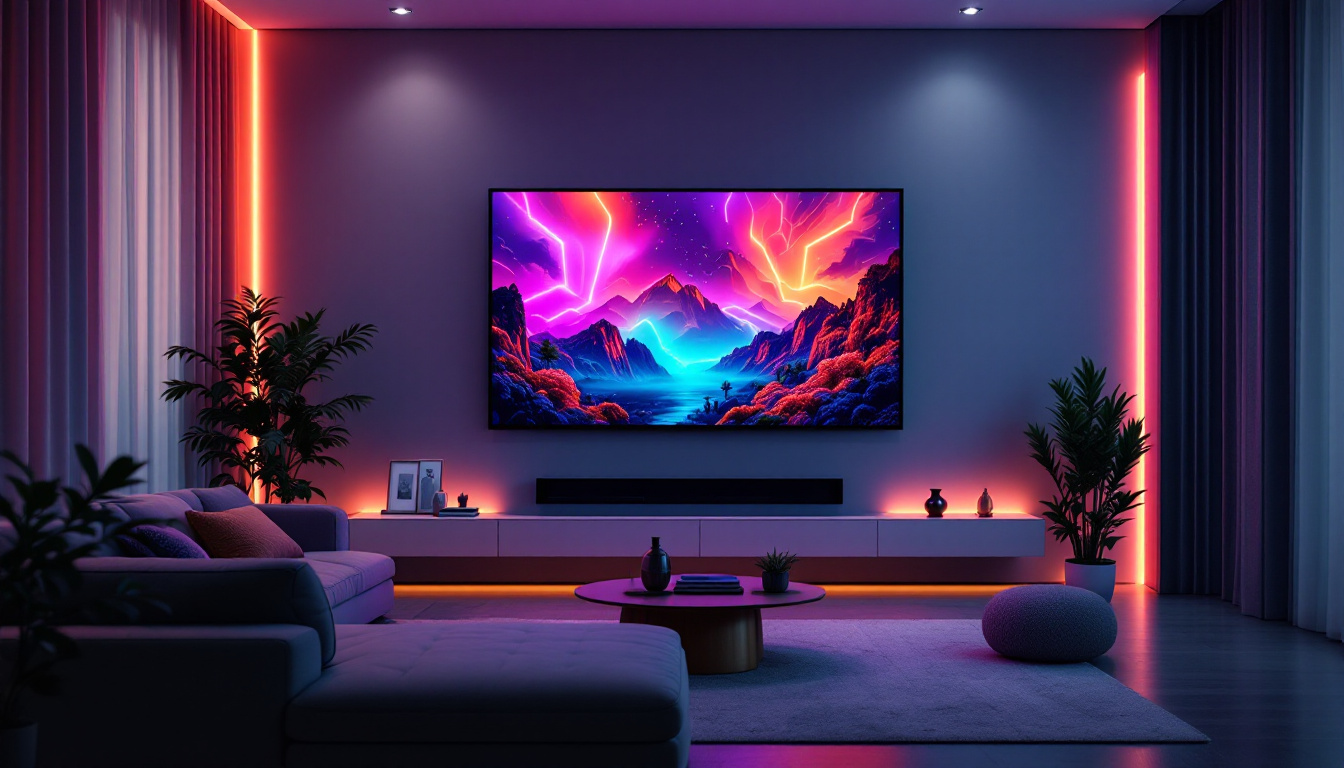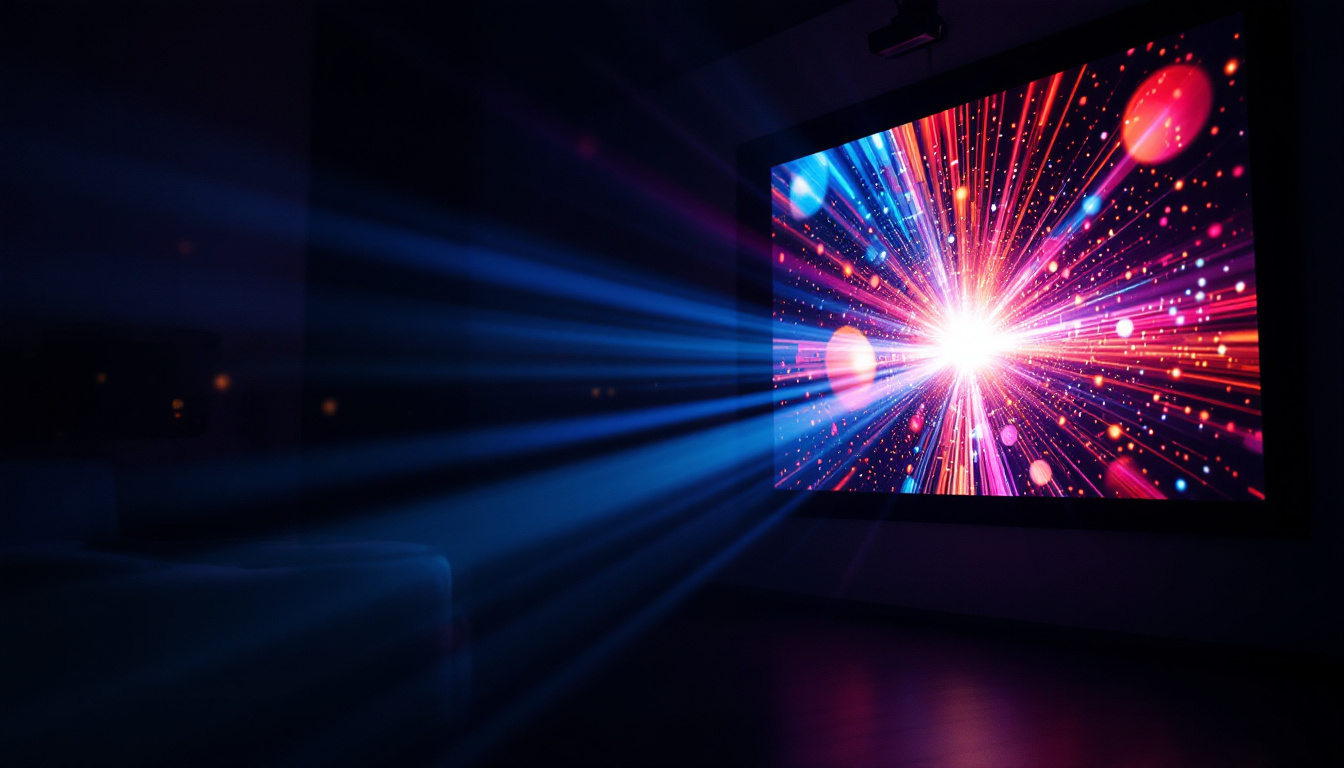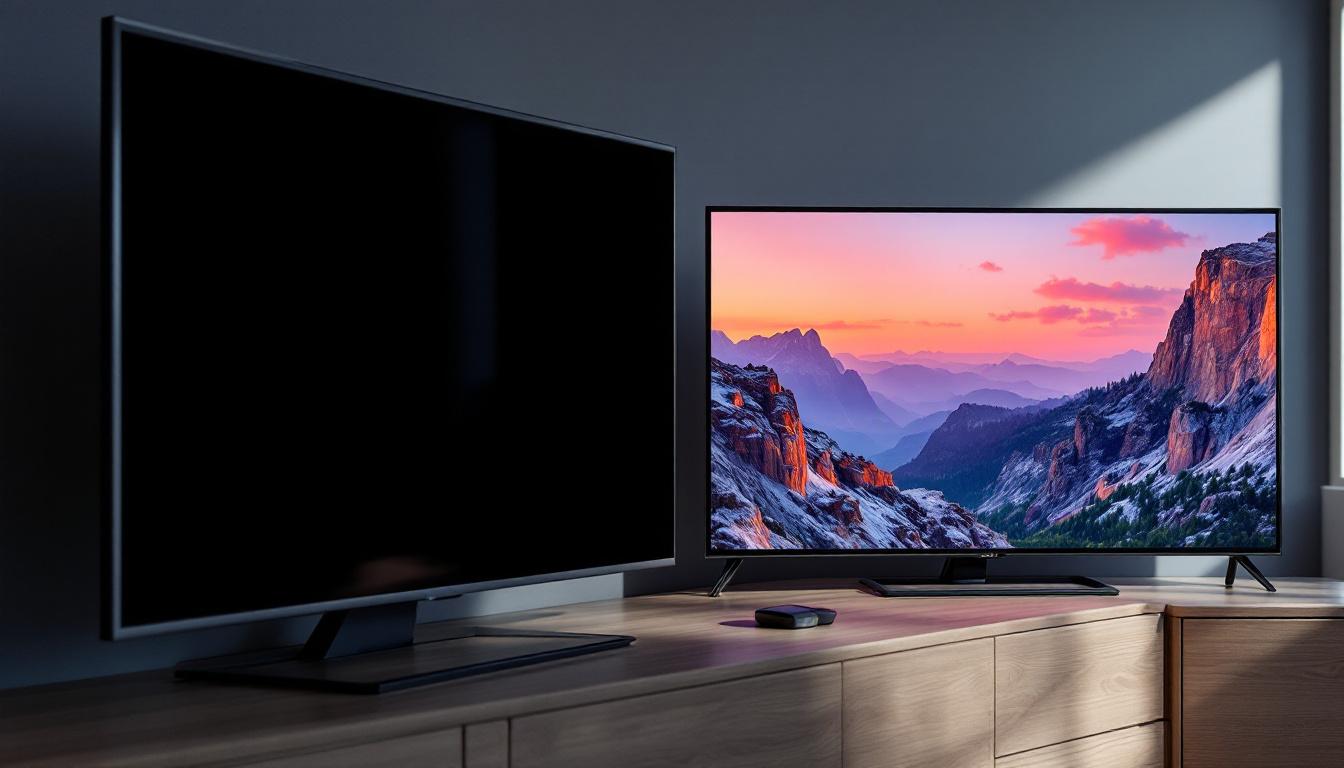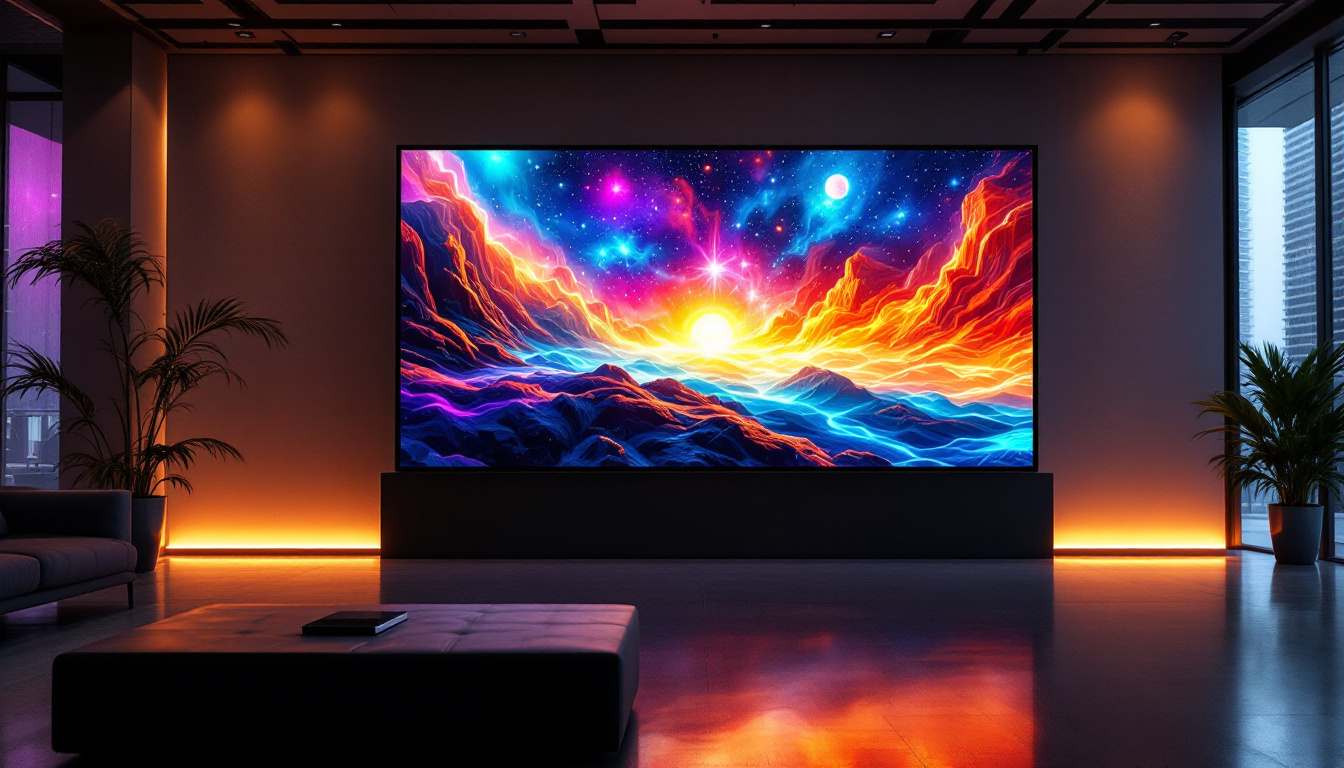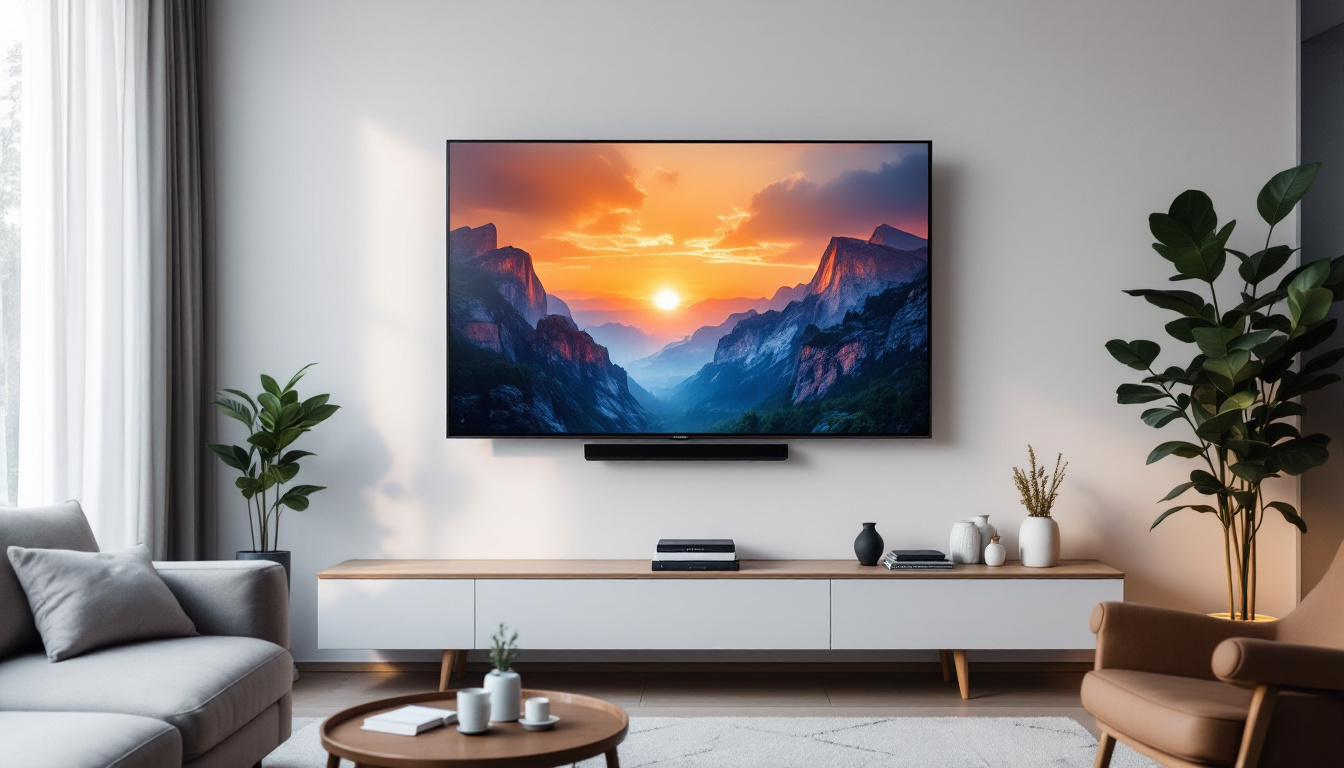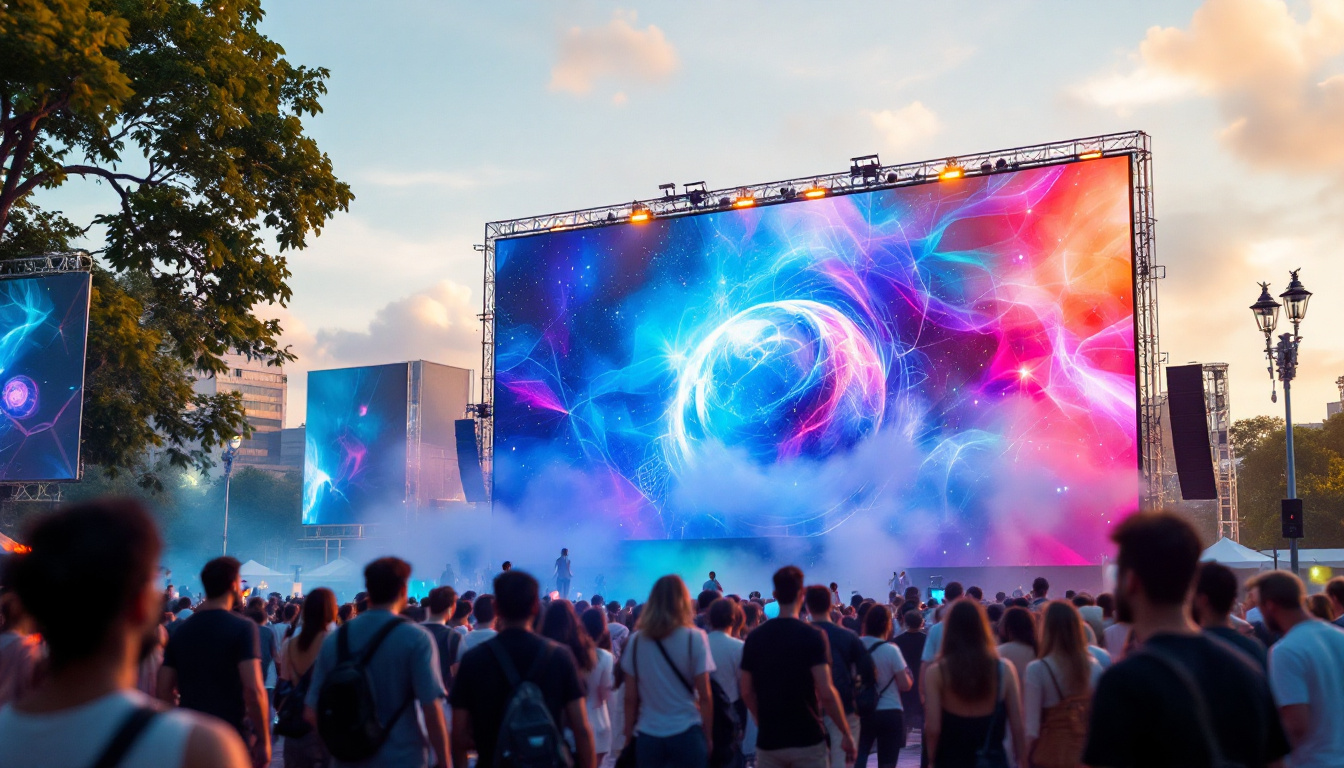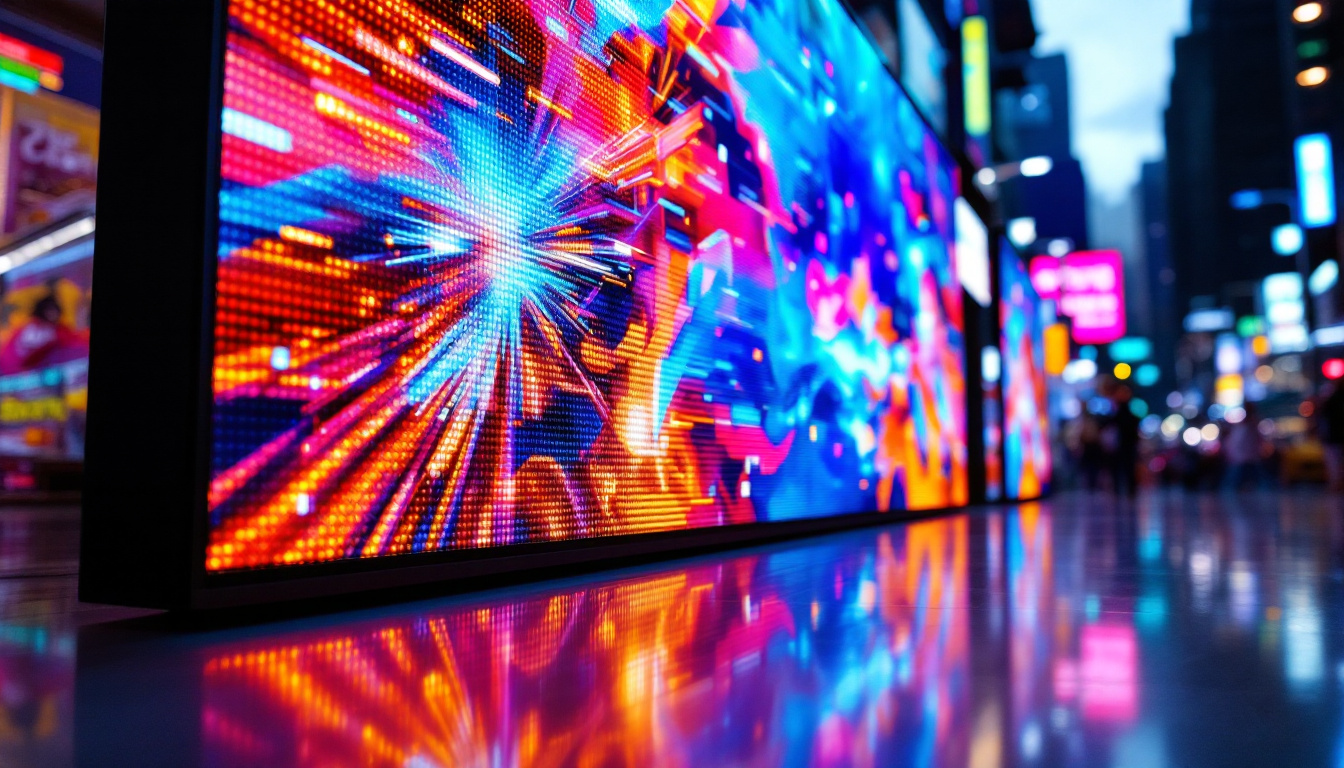In the realm of modern stage design, LED displays have emerged as a transformative element, reshaping how audiences experience performances. From concerts to corporate events, the versatility and vibrancy of LED technology have made it a staple in the industry. This article delves into the intricacies of LED displays, exploring their types, benefits, and applications in stage design.
Understanding LED Displays
LED, or Light Emitting Diode, displays utilize semiconductor technology to produce light. This technology allows for high brightness levels and energy efficiency, making it ideal for large-scale installations. Unlike traditional projection systems, LED displays provide a seamless image with minimal distortion, even in brightly lit environments.
Types of LED Displays
LED displays come in various forms, each tailored for specific applications. The two primary categories are indoor and outdoor displays. Indoor LED displays are designed for close viewing, offering higher resolution and finer pixel pitch. In contrast, outdoor displays are built to withstand environmental conditions and are typically larger, with lower resolution to accommodate viewing distances.
Additionally, within these categories, there are different technologies such as SMD (Surface-Mounted Device) and DIP (Dual In-line Package) LEDs. SMD technology combines red, green, and blue LEDs into a single module, allowing for more compact designs and better color mixing. On the other hand, DIP displays are more robust and are often used for outdoor applications due to their durability.
Key Features of LED Displays
One of the standout features of LED displays is their brightness. With capabilities to reach over 10,000 nits, they can easily cut through ambient light, making them suitable for outdoor events during the day. Furthermore, LED displays offer a wide color gamut, ensuring that images are vibrant and lifelike.
Another essential feature is their modularity. LED panels can be configured in various shapes and sizes, allowing designers to create unique stage setups. This flexibility enables the integration of displays into the overall aesthetic of the performance, enhancing the visual experience for the audience.
Benefits of Using LED Displays in Stage Design
The integration of LED displays into stage design offers numerous advantages that elevate the overall production quality. From enhancing visual storytelling to improving audience engagement, the benefits are substantial.
Enhanced Visual Experience
LED displays allow for dynamic content that can change in real-time, providing a rich visual narrative that complements the performance. This capability is particularly beneficial for concerts and theatrical productions, where visuals play a crucial role in storytelling. The ability to display high-definition video, animations, and graphics creates an immersive experience that captivates audiences.
Moreover, the brightness and clarity of LED displays ensure that visuals remain sharp and vibrant, even from a distance. This is particularly important in large venues where traditional projection systems may struggle to deliver quality images.
Energy Efficiency and Longevity
Another significant advantage of LED technology is its energy efficiency. Compared to traditional lighting and projection systems, LED displays consume considerably less power, which can lead to substantial cost savings over time. This efficiency is not only beneficial for event organizers but also for the environment, as it reduces the overall carbon footprint of productions.
Additionally, LED displays have a longer lifespan, often exceeding 100,000 hours of operation. This durability means that investments in LED technology can yield long-term benefits, reducing the need for frequent replacements and maintenance.
Flexibility and Customization
One of the most appealing aspects of LED displays is their flexibility. Designers can create custom shapes and sizes to fit the specific needs of a stage, allowing for innovative and unique designs. This adaptability enables the incorporation of LED displays into various stage configurations, whether it be a traditional proscenium stage or a more avant-garde setup.
Furthermore, the ability to control content dynamically allows for quick changes during performances, enabling a responsive approach to stage design. This flexibility can be a game-changer in live events, where timing and visual impact are crucial.
Applications of LED Displays in Stage Design
The versatility of LED displays has led to their widespread adoption across various types of events. From music festivals to corporate presentations, their applications are diverse and impactful.
Concerts and Music Festivals
In the world of live music, LED displays have become a fundamental component of stage design. They are used to create stunning backdrops that enhance the performance and engage the audience. High-resolution LED screens can display live footage of the performers, intricate visuals, and even interactive content that responds to the music.
Moreover, the ability to synchronize visuals with sound adds another layer of excitement to concerts. This synchronization can create a cohesive experience that resonates with attendees, making the event memorable. The flexibility of LED displays also allows for creative stage setups that can be tailored to the unique style of each artist.
Theatrical Productions
Theater productions have also embraced LED technology to enhance storytelling. LED displays can serve as dynamic backdrops, providing context and setting the mood for various scenes. This technology allows for quick scene changes and the incorporation of multimedia elements, enriching the narrative.
In addition, LED displays can be used to create immersive environments that transport audiences into the world of the play. By utilizing video projections alongside live performances, directors can craft a multi-dimensional experience that captivates viewers and deepens their emotional connection to the story.
Corporate Events and Trade Shows
For corporate events and trade shows, LED displays are invaluable tools for communication and branding. They can be used to showcase product demonstrations, display promotional videos, and convey key messages to attendees. The high visibility of LED displays ensures that content is easily seen and understood, even in crowded environments.
Moreover, the customizable nature of LED technology allows companies to create visually striking presentations that align with their brand identity. This capability can enhance the overall impact of a corporate event, leaving a lasting impression on clients and stakeholders.
Challenges and Considerations
While LED displays offer numerous benefits, there are challenges and considerations that event planners and designers must keep in mind. Understanding these factors can help ensure successful implementation and maximize the effectiveness of LED technology in stage design.
Cost Implications
One of the primary challenges associated with LED displays is the initial cost. High-quality LED panels can be expensive, and the investment may not be feasible for all productions. However, it is essential to consider the long-term benefits, such as energy savings and durability, which can offset the initial expenditure.
Event planners should also factor in the costs of installation, maintenance, and potential upgrades. Collaborating with experienced professionals can help navigate these financial considerations and ensure that the investment aligns with the overall budget and goals of the event.
Technical Expertise
Successfully integrating LED displays into stage design requires technical expertise. From setup to operation, having knowledgeable personnel is crucial to avoid technical glitches that could disrupt a performance. This expertise extends to content creation as well, as high-quality visuals require skilled designers who understand the nuances of LED technology.
Event organizers should prioritize training for their teams or consider partnering with specialized companies that offer technical support. This collaboration can ensure that the LED displays function optimally and contribute positively to the overall production.
Environmental Considerations
As with any technology, environmental considerations are paramount. While LED displays are more energy-efficient than traditional lighting, their production and disposal can still have an ecological impact. Event planners should seek out manufacturers that prioritize sustainable practices and consider the lifecycle of the technology when making purchasing decisions.
Additionally, integrating LED displays into a broader sustainability strategy can enhance the overall environmental responsibility of an event. This approach can resonate with audiences who value eco-friendly initiatives and contribute to a positive brand image.
The Future of LED Displays in Stage Design
The future of LED displays in stage design looks promising, with advancements in technology continually pushing the boundaries of what is possible. Emerging trends suggest that LED displays will become even more integrated into the fabric of live performances, creating opportunities for innovation and creativity.
Advancements in Technology
As technology evolves, LED displays are becoming lighter, thinner, and more versatile. Innovations such as flexible LED screens and transparent displays are paving the way for new design possibilities. These advancements will enable designers to create more immersive environments that seamlessly blend visuals with physical elements of the stage.
Furthermore, the integration of augmented reality (AR) and virtual reality (VR) with LED displays is set to revolutionize live performances. By combining real-time content with immersive experiences, audiences can engage with performances in unprecedented ways, enhancing their overall enjoyment and connection to the event.
Increased Accessibility
As LED technology becomes more affordable and accessible, it is likely that a broader range of events will incorporate these displays. This democratization of technology can lead to more creative and diverse productions, as smaller companies and independent artists gain access to high-quality visual tools.
Moreover, advancements in software and content creation tools will empower more individuals to create compelling visuals for LED displays. This increased accessibility can foster innovation and experimentation, enriching the landscape of live performances.
Conclusion
LED displays have undeniably transformed the world of stage design, offering unparalleled opportunities for creativity and engagement. Their versatility, energy efficiency, and dynamic capabilities make them a valuable asset for any production. As technology continues to advance, the potential for LED displays in live events will only grow, paving the way for a future where audiences can experience performances in ways previously thought impossible.
By understanding the intricacies of LED displays and their applications, event planners and designers can harness this technology to create memorable experiences that resonate with audiences. As the industry evolves, embracing innovation and sustainability will be key to shaping the future of stage design.
Illuminate Your Stage with LumenMatrix
Ready to elevate your stage design to new heights? Discover the innovative world of LumenMatrix LED display solutions. As a leader in LED technology, LumenMatrix offers a wide array of products designed to bring your creative vision to life. From the vibrant Indoor LED Wall Display to the dynamic Outdoor LED Wall Display, and from the versatile Vehicle LED Display to the sleek LED Poster Display, our solutions are crafted to captivate and engage. Whether you’re looking to create an immersive environment with a Floor LED Display or make a bold statement with a Custom LED Display, LumenMatrix is your partner in revolutionizing visual communication. Don’t miss the chance to transform your next event. Check out LumenMatrix LED Display Solutions and see your stage design shine like never before.

